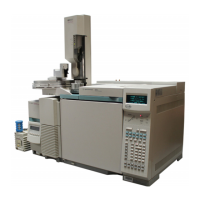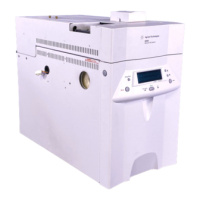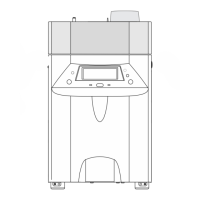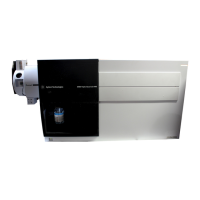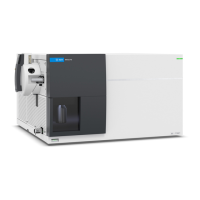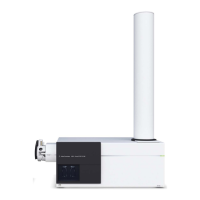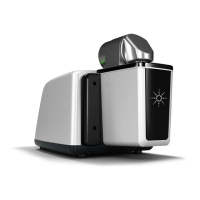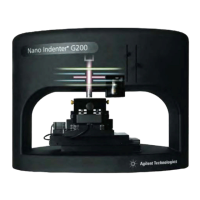155
Signal Handling
Analog output settings—zero, range, and attenuation
4. Press [On] to set Zero at the current signal value,
or
Enter a number between -500000 and +500000. A value smaller than the
current Zero shifts baseline up.
Range—for analog outputs only
Range is also referred to as gain, scaling, or sizing. It sizes the data coming
from the detector to the analog signal circuits to avoid overloading the circuits
(clamping). Range scales all analog signals (1 mV, 1 V, etc.)
If a chromatogram looks like A or B in Figure 23, the data needs to be scaled (as
in C) so that all peaks are visible on the paper.
Valid setpoints are from 0 to 13 and represent 2
0
(1) to 2
13
(8192). Changing a
setpoint by 1 changes the width of the chromatogram by a factor of 2. The
chromatograms in Figure 23 illustrate this. Use the smallest possible value to
minimize integration error.
See Table 20 for output scaling with different analog output devices.
Table 20 Output Scaling
Analog One display unit = Digital One display count =
0 to 1 mV
1mV/2
Range
*2
Attn
ChemStation 1 height count
0 to 1 V
1 mV/2
Range
INET
(3396B and
3396C)
10,000 height counts
2
SIGRANGE
(set from 3396)
0 to 10 V
1 mV/2
Range
INET area counts (on INET SIGRANGE 0) are
approximately 10,000 * ChemStation area counts
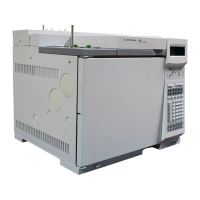
